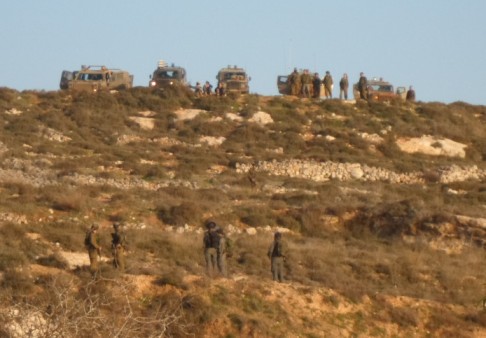Tag: Settlers
-
BREAKING NEWS: Internationals arrested and hospitalised for trying to plant trees in Urif
12 February 2013 | International Solidarity Movement, Urif, Nablus, Occupied Palestine UPDATE: All of those detained today have been released and the Brit who was pepper sprayed has been let out of hospital At around 11am this morning, a group of internationals including three volunteers from the Michigan Peace Team travelled to Urif in Nablus.…
-
The situation in Khan al-Luban deteriorates
22 January 2013 | International Solidarity Movement, Khan al Luban, Occupied Palestine. The far-right settler organisation Regavim has filed a lawsuit against Khan al-Luban, taking the Darragmah family and various other Israeli institutions and groups to the Israeli Supreme Court. They claim that their home is a historical site on Israeli state land. Regavim, who state…
-
Urif under attack
26 December 2012 | International Solidarity Movement, Urif, Occupied Palestine Over the past three days, the village of Urif, south of Nablus, has been under constant attack from Israeli settlers and soldiers. Soldiers invaded the village twice and numerous people sustained injuries from rubber-coated steel bullets and tear gas canisters. People in Urif said that…

